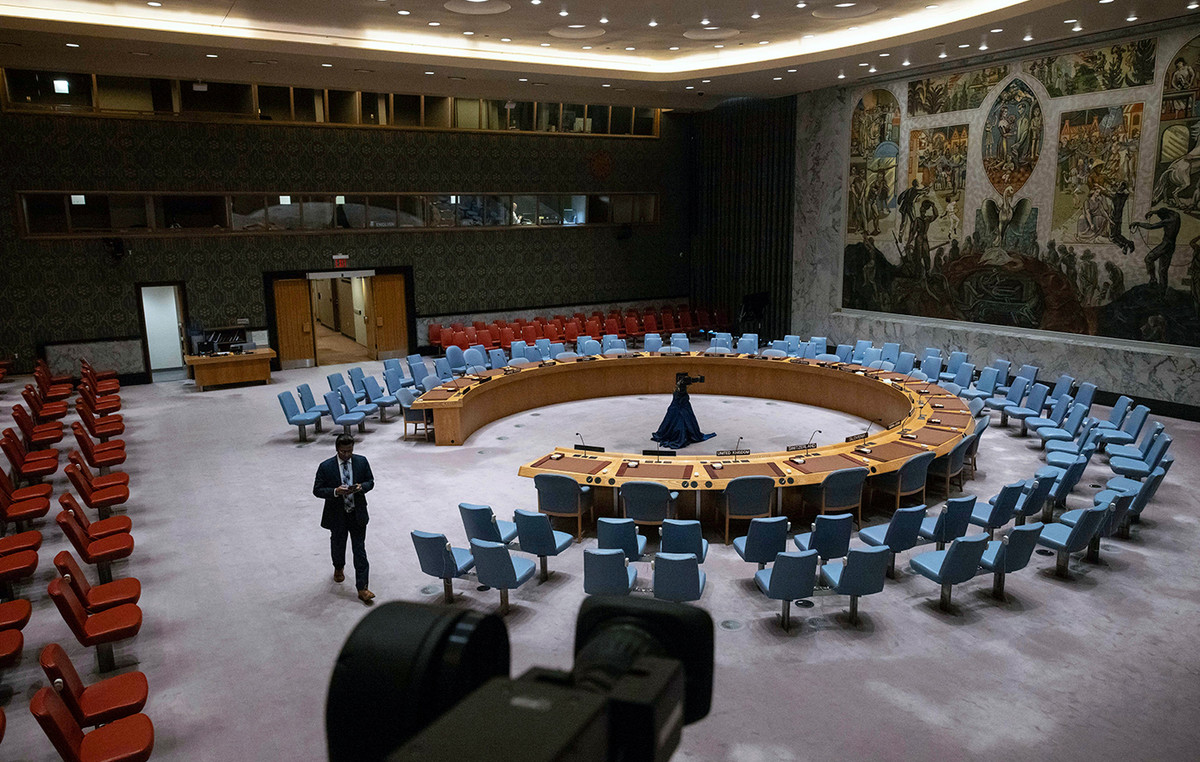It is estimated that 10.6 million people became ill from tuberculosis in 2021, an increase of 4.5% compared to 2020. About 1.6 million individuals have died from the disease, including 187,000 people living with HIV, according to the global report on the public health problem released by the Organization World Health Organization (WHO) this Thursday (27).
The burden of drug-resistant tuberculosis also increased by 3% between 2020 and 2021, with 450,000 new cases of rifampicin resistance in 2021. WHO says this is the first time in many years that an increase in the number of cases has been reported and of resistance and warns that health services focused on the disease are among the many interrupted by the Covid-19 pandemic. However, ongoing conflicts in Eastern Europe, Africa and the Middle East have further aggravated the plight of vulnerable populations.
“If the pandemic has taught us anything, it is that with solidarity, determination, innovation and the equitable use of tools, we can overcome serious health threats. Let’s apply these lessons to tuberculosis. It’s time to end this longtime killer. Working together, we can end TB,” Tedros Adhanom, director-general of the WHO, said in a statement.
According to the WHO, tuberculosis still remains underdiagnosed due to challenges in providing and accessing health services. According to the report, the reported number of people newly diagnosed with the disease dropped from 7.1 million in 2019 to 5.8 million in 2020. Although there has been a partial recovery in timely detection of the disease to 6.4 million in 2021, rates are still below pre-pandemic levels.
The WHO estimates that the reduction in the number of people diagnosed represents an underreporting of cases and that more people with the disease may be left without adequate treatment, leading to an increase in the number of deaths and community transmission. The report points to a drop in the number of people receiving treatment between 2019 and 2020. The reported number of individuals starting treatment for resistant cases in 2021 was 161,746, just about one in three of those in need.
The report also points out that there has been a decline in global spending on essential services to combat the disease from US$6 billion in 2019 to US$5.4 billion in 2021, which represents less than half of the global target of US$. 13 billion annually by 2022. The document indicates that, as in the previous ten years, most of the funding used in 2021 (79%) was of national origin.
In other low- and middle-income countries, funding from international donors remains one of the main sources for tuberculosis control programs.
What the report reveals positive
The WHO says that despite the stagnation in progress, some positive indicators have been identified. The 2022 report presents data on disease trends and the epidemic response from 215 countries and areas, including all 194 WHO Member States.
Some 26.3 million people were treated between 2018 and 2021, still short of the 40 million targets set for 2018–2022 at the United Nations (UN) High Level Meeting on tuberculosis.
Brazil is among the countries with the highest levels of treatment coverage in 2021, considering the 30 countries with a high burden of disease. Bangladesh, China, Uganda and Zambia are also listed.
The number of people receiving preventive treatment recovered in 2021 to close to 2019 levels. However, the cumulative total of 12.5 million between 2018 and 2021 was still far from the target of 30 million by the end of 2022.
Preventive treatment for people living with HIV has far surpassed the global target of 6 million in the period 2018-2022, reaching more than 10 million in just 4 years. Seven countries – India, Nigeria, South Africa, Uganda, United Republic of Tanzania, Zambia and Zimbabwe – collectively accounted for 82% of those starting preventive treatment in 2021.
According to the report, countries are also increasing the adoption of new tools and guidelines recommended by the WHO, resulting in earlier access to prevention and care and better outcomes. The proportion of diagnosed people who were initially tested with rapid diagnosis has increased from 33% in 2020 to 38% in 2021.
WHO reiterates a call for countries to implement urgent measures to restore access to essential tuberculosis services. In addition, it requires greater investment and multisectoral action to address the broader determinants that influence tuberculosis epidemics and their socioeconomic impact, as well as the need for new diagnostics, drugs and vaccines.
tuberculosis symptoms
Tuberculosis is an infectious and communicable disease caused by the bacteria Mycobacterium tuberculosis, also known as Koch’s bacillus. The extrapulmonary form, which impacts organs other than the lung, occurs most often in people living with HIV, especially those with immune compromise.
“There is a type of disease manifestation called miliary tuberculosis, which spreads throughout the body. You can even have meningitis caused by the tuberculosis bacillus. The condition can be quite serious, requiring the intervention of several specialties to treat a patient”, explains neurosurgeon doctor Fernando Gomes, professor at the Hospital das Clínicas de São Paulo.
The main symptoms include coughing for three weeks or more, afternoon fever, night sweats, and weight loss (see picture below ).

long treatment of the disease
Tuberculosis treatment lasts from six months to a year. Therapy is performed with the use of antibiotics, including the drugs rifampicin, isoniazid, pyrazinamide, and ethambutol.
One of the main difficulties in fighting the disease is the lack of adherence to treatment. The long duration and rapid improvement results make some patients stop using the medication.
Discontinuity puts health at risk, due to the risks of developing a drug-resistant form of the disease, known as multidrug-resistant tuberculosis.
Source: CNN Brasil
I am an experienced journalist and writer with a career in the news industry. My focus is on covering Top News stories for World Stock Market, where I provide comprehensive analysis and commentary on markets around the world. I have expertise in writing both long-form articles and shorter pieces that deliver timely, relevant updates to readers.







